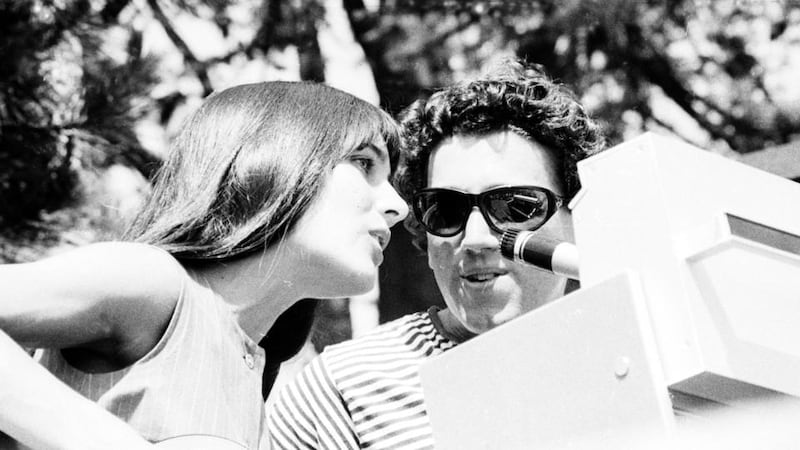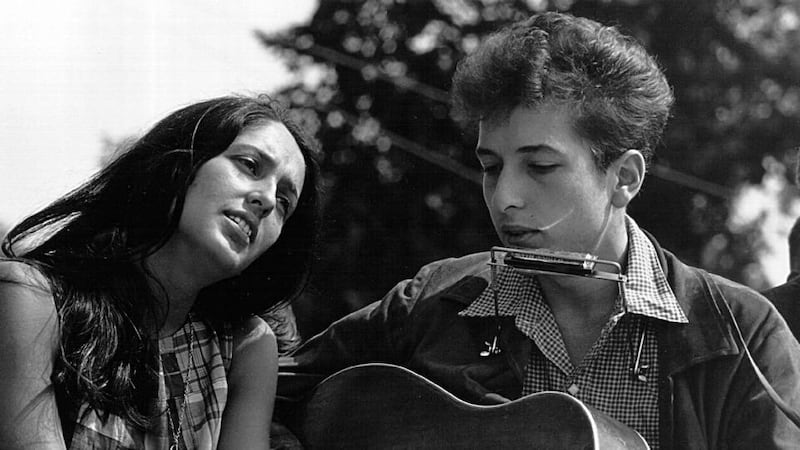He is almost forgotten now, but 50 years ago Richard Fariña seemed poised for fame. The only issue was whether he would follow a literary or a musical path to success. The New Yorker was a rising singer making waves with the folk-rock albums that he recorded with his wife, Mimi. He had also just published an exuberant debut novel, heralding the arrival of an adventurous voice in tune with the cultural and social tumult of the 1960s.
But just as renown beckoned Fariña was killed in a motorcycle crash, in northern Californian. That his name should have faded into obscurity a half-century later adds another layer of cruel irony to his story. For if there was one thing Fariña craved it was recognition. Fame and glory, in the opinion of his biographer David Hajdu, "were the things that we think he loved most".
But if he is known at all now it is not so much for what he did as for whom he knew. His circle of friends included some of the most influential figures in American culture, from the famously reclusive novelist Thomas Pynchon to Joan Baez and Bob Dylan.


The Tyrone link
There is one place where Fariña’s name is still remembered, however. Situated by the banks of Lough Neagh, the townland of
Ardboe
, in Co Tyrone, may seem an unlikely area to hold a torch for a niche figure from midcentury American bohemian life. But it was from this northern community that Fariña’s mother, Theresa Crozier, emigrated to the
United States
, and it was there that her son would later make his mark as a young man in the 1950s.
On trips to the rural fishing community, first with his mother and later on his own, Fariña would go out on the lake with his uncles and cousins, experiences that would later feature in his fiction. With his dark good looks – his father was originally from Cuba – he cut a striking figure among the wider population in Ardboe. One of the locals struck by his presence was my mother.
Marie Devlin, as she was in those days, was home on holidays from boarding school when she first spotted the exotic-looking American while attending Mass. He made enough of an impression for my mother to recall the encounter in casual conversation a few decades later, sometime in the 1990s. It was the first time I heard the name Richard Fariña.
Ever since then I have gone out of my way to hear more of him, be it his songs or the intriguing tales that surrounded him. My interest eventually reached the point where I have now made a programme about Fariña for RTE Radio 1's Documentary on One series. (And, no, I won't be reviewing it in my Irish Times radio column.)
In the programme I try to trace his brief but luminous career, which was cut short by his death and subsequent burial in the Californian town of Monterey. I also wanted to examine the influence of his Irish visits, particularly regarding the hair-raising tales he would tell about his experiences in his mother’s homeland. But while there’s no shortage of material for anyone hoping to chronicle his life, there is one significant hurdle to overcome.
When it came to recounting his background, fidelity to the facts was not Fariña's strong point. "He was a fantasist," says Hajdu, whose 2001 book, Positively 4th Street, is the nearest thing we have to a Fariña biography. "I constructed the facts of Fariña's early life from the testimony of his father and other family, because his own testimony was utterly unreliable."
This, if anything, seems like an understatement. When Fariña wasn’t telling his friends in the US that he had been a gunrunner for Fidel Castro he was spinning startling stories about his adventures in Ireland. He had participated in secret missions for the IRA, he would claim, helping to blow up a British patrol boat, before being deported for his activities.
These claims seem unlikely in the extreme: a visiting American student was not obvious IRA material, even during the spluttering “Border campaign” of 1956-62. But, back in the US, Fariña told these stories with such conviction that his purported republican activities would later be stated as fact in the biographical blurb on his books.
The reality was interesting enough. He was born in Brooklyn in 1937, the only son of Theresa and Richard Fariña snr. He was drawn to the imaginative life early on, devouring books and comics as a child. Later, attending the prestigious Ivy League university of Cornell, his room-mate was the young Pynchon, already a promising writer. Fariña followed suit, swapping engineering for English literature. He also visited Ireland on his own, joining his uncles on fishing expeditions on Lough Neagh and exploring the countryside by motorcycle.
By the late 1950s he was working in advertising in New York. As an aspiring writer he frequented the city’s literary hangouts, before his attention turned to a nascent musical scene emerging in Greenwich Village.
“Somewhere along the line he developed an interest in folk,” says Hajdu. “This seemed to dovetail with the fact that folk music was trendy at the time: he had a highly attuned sense of what was cool.” Among protest singers, the fact that he knew both Ireland and Cuba also gave him a patina of radical authenticity.
He was soon a fixture in downtown Manhattan’s folk clubs. There he met his first wife, the Texan singer Carolyn Hester. He got to know a young Dylan, then an unsigned artist, and Baez, already a folk star. After divorcing Hester, Fariña married Baez’s younger sister, Mimi, in 1963, when she was still an 18-year-old schoolgirl.
Charisma
That he had such a network of well-connected friends – and indeed wives – is testament to the charisma that had caught my mother’s eye back in Ireland.
Judy Collins
, one of the most famous folk singers of the 1960s, recalls his company with affection.
“He was hysterical,” she says. “He was always pulling jokes on people. He was so funny, smart and literate.” But he was also a confidant who encouraged her to write: “He was a tremendously important person in my life.”
For all his attention-seeking, Fariña was at heart a gifted and versatile artist. When he moved to California his talent as a songwriter blossomed in partnership with Mimi. As well as containing marvellous songs, their two albums, Celebrations for a Grey Day and Reflections in a Crystal Wind, are pioneering examples of folk rock, at a time when Dylan was taking similar steps. Fariña's distinctive playing of the dulcimer, a simple three-stringed instrument, adds an otherworldly feel.
Alongside this Fariña's literary career finally gained momentum. After years of writing stories and poems, 1966 saw the publication of his first novel, Been Down So Long It Looks Like Up to Me. Although its hallucinatory imagery and beat-inflected prose haven't aged especially well, its story about a maverick student chimed with an era of campus protest and social upheaval.
Then, on April 30th, 1966, at a party to celebrate his new book, Fariña went out on a motorbike ride as a pillion passenger and never returned. Aged 29, he was thrown from the bike on a twisting road and killed.
Unlike other young talents who met similarly tragic ends, Fariña has enjoyed little posthumous fame.
“It’s probably an accurate description of how Fariña is perceived today to say that if he’s known at all it’s because of who he knew,” says Hajdu. “But it’s not a fair assessment of his value.”
Fariña’s old friend Judy Collins is more succinct. “He just wasn’t around long enough to establish that legend. We have to remember it.”
It’s this legend that I wanted to revisit and untangle in the documentary.
Meanwhile, there are ripples of revived interest in his work. The veteran English folk-rock act Plainsong, long time fans of Fariña, have released Reinventing Richard, an arresting and inventive album of cover versions of his songs. "I just hope our record will lead a younger generation to his records," says Plainsong's Andy Roberts, "because they're wonderful."
Meanwhile, Fariña’s Irish connections, evident in his tales, his letters and his renditions of Irish songs, remain strong today: his uncle Owenie Crozier still lives in Ardboe.
And if his yarns about Cuban exploits and IRA missions weren’t strictly true, they fuelled an imaginative mind whose works can still entertain readers and listeners. Fariña may not have gained the fame he deserved, but he retains his magnetism.
Documentary on One: Richard Fariña – From Lough Neagh to Monterey is on RTÉ Radio 1 at 1pm on Saturday, August 13th









